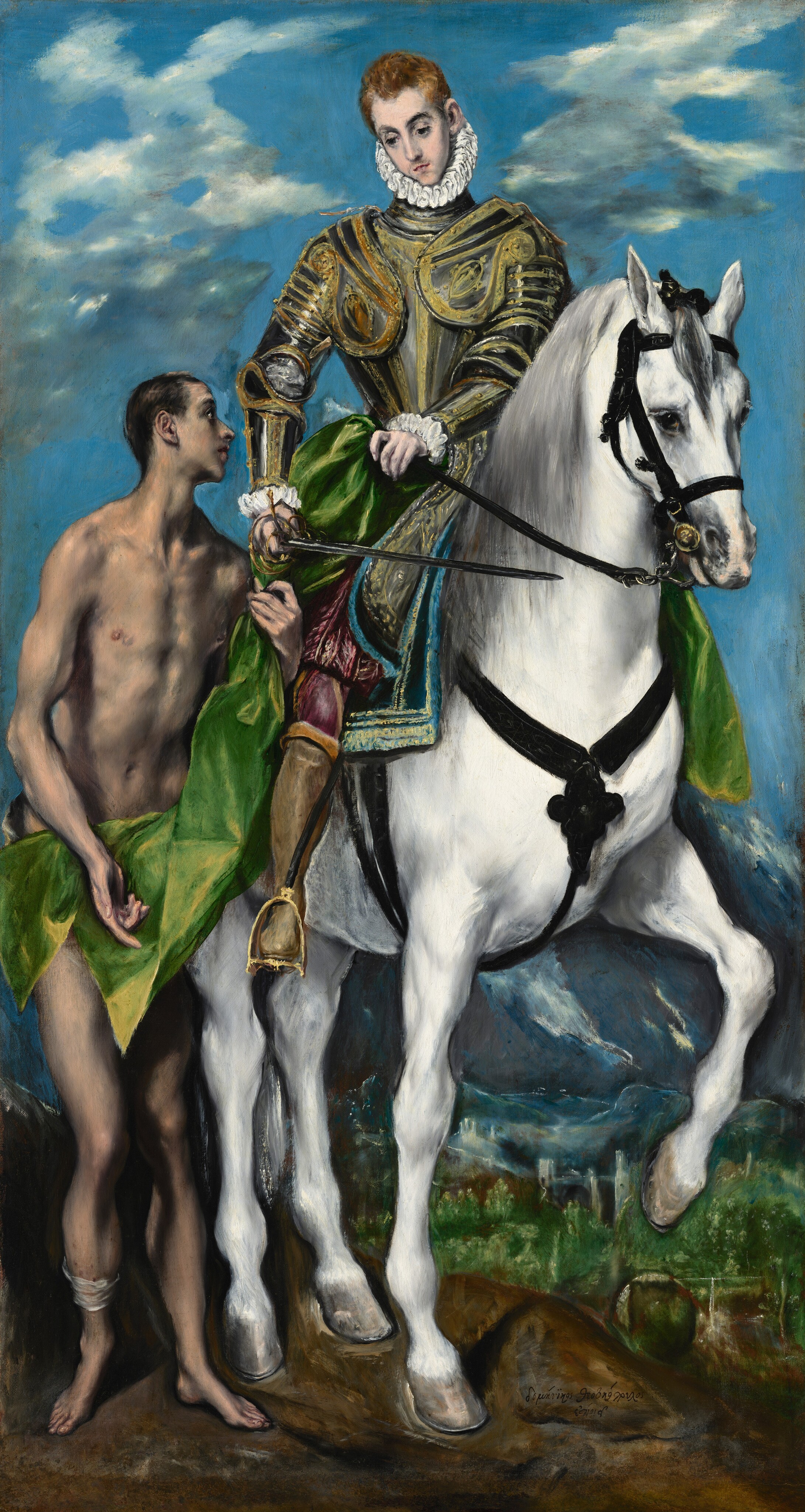Commissioned for the Chapel of San José in Toledo, Spain, by Martín Ramírez, a namesake of the saint and donor of the chapel, Saint Martin and the Beggar was part of one of the El Greco's most successful ensembles. It is breathtaking!
The saint, who lived during the reign of Constantine the Great, was a member of the imperial cavalry stationed near Amiens, in Gaul. Coming upon a shivering beggar near the city gates on a cold winter day, the young soldier divided his cloak with his sword and shared it with him. Tradition has it that Christ later appeared to Martin in a dream, saying, "What thou hast done for that poor man, thou hast done for me."
El Greco portrayed the 4th-century saint as a young nobleman, clad in elegant gold-damascened armor, astride a white Arabian horse. Seen from a low vantage point, the figures seem monumental, looming over the landscape with its distant view of Toledo and the river Tagus. The saint's relatively naturalistic proportions contrast with the attenuated form of the nearly nude beggar. The obvious distortion of the beggar's form suggests that he is not of this world and hints at the later revelation of his true identity in Martin's dream.
Dear DailyArt users, we need to ask you for money to develop a new version of the DailyArt app. Without it, we won't be able to continue our work; the current app is just to old. If you would like to help us, please read about how you can help. Thank you!
P.S. Read a fascinating story of how El Greco influenced 20th-century Expressionists!


 El Greco
El Greco